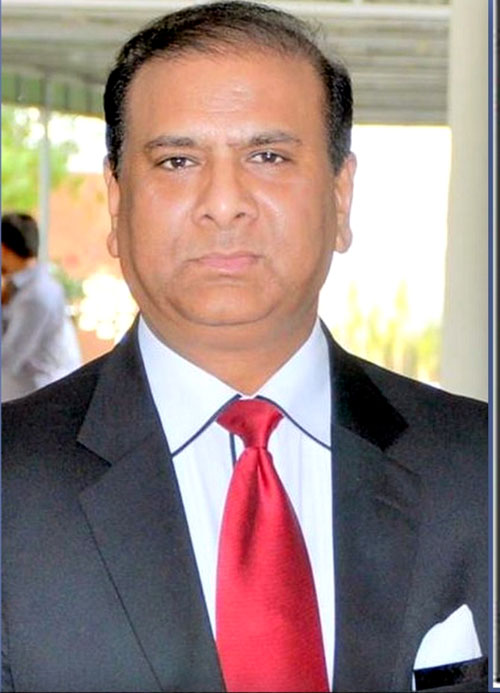Muhammad Nadeem Bhatti
There is a dire need for houses for the poor and lower-middle-class segment in South Asia. The countries having extreme shortages of houses include India, Pakistan, and Bangladesh.
It is estimated that one in every four people on this planet lives in South Asia, and more than 14% of South Asians have no home, not counting a further 45% living in overcrowded conditions.
Also, the report of World Bank noted that the region’s economic growth in the future, employment, and social development, are tied to providing housing and the funding for home-ownership.
Informal settlements and Large-scale slums that exist in nearly all South Asian states underline the urgency of meeting the demand for homes.
There is a shortage of around 38 million housing units in the entire region; taking into account average household size, this translates to 212.5 million homeless or poor people, 14% of a total population of 1.5 billion.
A house is a place where we live. It can be considered as one of the essential things that we need to have to live our lives peacefully as it provides us security and keeps us safe from bad weather, sunlight and storm.
Also, if you have a house in a nice, classy town in your city, it will complement your personality too. We live in a country where things are not that expensive compared to developed countries.
But when it comes to housing societies, plots, and fully furnishedhomes,Pakistan even stays behind some of the most expensive countries in this regard. With each passing day,properties are becoming more and more expensive in the country, and it is too difficult for a poor or a common man to buy a house.
Similarly, interior designers and furniture are expensive too.
To copewith the crisis in the country, first time in the history of South Asia, the Prime Minister of Pakistan,Mr. Imran Khan aims to give houses to those who live by hand to mouth but do not commit any crime.
Also, the plan will mainly focus on the financially underserved and middle-income communities as a measure of comprehensive socio-economic uplift. By this initiative, his main concern is to provide homes for the lower class as well as create job opportunities for the citizens.
For the first 100,000 housing units being built for the low-income group by the government entities themselves or in a public-private partnership model, the government will provide Rs 300,000 for each house as a cost subsidy for which a total of Rs 30 billion rupees has been allocated.
According to estimates, all over the country, more than 45000 low-cost housing units are under construction, including four recently inaugurated projects,including 11000 housing units at LDA City Lahore, AlipurFarash Islamabad, and Zone-V Islamabad.
Also, it includes the Punjab Peri-Urban housing scheme recently inaugurated at Sargodha. The monthly mortgage installments for these houses would be less than Rs 10000 per month. Nearly 12 sites have been inaugurated by the Prime Miniter. Another 10 sites will be inaugurated in the coming weeks.
Rapid urbanization and population growth have resulted in the generation of vast demand for housing.
According to the Pakistan State Bank, housing accumulation which was 4,300,000 million in 1998, has increased to 10,000,000 million in the year 2017, a substantialshare of which is being contributed by the province Punjab.
Also, the current supply of different home sizes is not in line with the income distribution.Back in the year 2017, there was a shortage of 208,926 housing units in Faisalabad, and it will increase to 291,723 houses by 2023.
To meet thisincreasing demand, a scheme is introduced under Naya Pakistan Housing Programme in Faisalabad, in the area of 574-Kanals, available with Faisalabad Development Authority (FDA). Not only, the housing project will provide people with reasonable residences, but it will also create employment opportunities.
In Pakistan, the housing sector has largely been neglected by several Governmentsin previous decades. If at all it got any attention of the Political Leadership, it never moved beyond mere political slogans.
Even if some work was done at the government level, it did not move beyond some desire and discussions and was not even put on any drawing table. Pakistan is currently facing an overall housing backlog of 11-12 million housing units.
The urban housing shortage is estimated to be around 4 million. Pakistan’s urban population is one-third of the total population, which is expected to reach 50% by 2050. Most of the urban housing backlog is in low and lower-middle-income segments of the population.
On the supplyside, the housing developer industry has been active in supplying units to middle and upper-middle segments of the population.
The people at the Bottom-of-Pyramid (BoP), overall estimated at 20% of the population, largely live-in illegal habitats, squatter settlements, and slums (KatchiAbadis).
I commend this bold and sincere step that this government has taken for the betterment of our society. In this regard, all I can say is that excess of anything is bad.
To evade illiteracy and poverty, the nation should be committed to playing the exceptional role as a good citizenwith each expect of social & moral activities and duties.
But it should be noted that there is a restriction or control on our population growth that has reached 220 millionbecause the continuous increase in population is the main reason behind the increase in corruption and crime.
The more the population, the more resources will be limited. If we make a comparison with the Scandinavian countries, regardless of so many resources, they have control over their population, and that’s why they are regarded and enjoying the status of leading states in the world.
—The writer is a Senior Social Analyst & Chairman Pakistan Columnist Council









